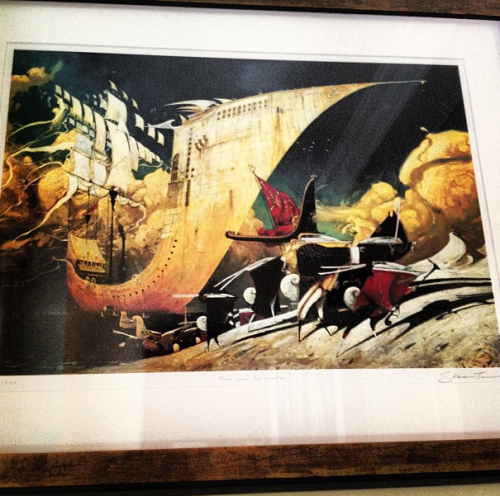I would hope it’s not necessary but I would like to say that all statements herein are one writer’s opinion/journey/thoughts/observations (that is, mine) and I think publishing is far too vast and complicated, especially lately, to say that a single author experience speaks for an industry or a movement or anything but its own self. One thing I’ve realized from meeting lots of writers in the past few years is that every single person’s journey is different and personal. It’s not a particularly straightforward job trajectory, after all.
So the wise and lovely Chuck Wendig has been posting a lot of wise things about self-publishing lately and I’ve been following along and having Thoughts from my admittedly unusual perspective on such things and the Thought that I’d most like to get out there in response is this:
Had I self-published The Night Circus it would have been a lousy book with no plot and likely would have disappeared into the ether. I will stand by that statement, though in all honesty I probably wouldn’t have self-pubbed it and instead let it languish on my harddrive while I wrote another book.
The entire saga of manuscript-to-agented is detailed back here but the short version is I got my manuscript to the point where I didn’t know what else it needed and it seemed like the right point to start sending it out. I did. It got requests because I had a query letter that made it sound like it had a plot when it really didn’t. It also got a lot of rejections.
And then my messy, plotless manuscript reached people who politely informed me that it was messy and plotless and needed a lot of work. But they also said they would be interested if I worked on it more and basically completely rewrote it.
I could have decided they were wrong and not listened and turned around and self-published the manuscript I had because at that point I was in a bit of denial about the whole messy plotless thing.
I’m really, really glad I listened.
(I will fully admit I dragged my feet. I did two rounds of revising and the first was a “stick bells and whistles and glitter on it” attempt to not actually re-work the entire damn thing and the second was a proper re-working of the entire damn thing.)
To be clear: no one ever told me what to write. Ever. All choices were made by me, all words were written by me, all fiction-fueling tea & chocolate was consumed by me personally. But agents and later editor and my very dear critique partner all gave me lots of feedback about what wasn’t working, what was working, and what I could do better along the way. No one ever tried to alter my artistic vision, they just helped me make it clearer.
An example: The initial draft that I queried with has no competition. One suggestion was to make the circus more of a background setting and that combined with the already black and white color scheme and the fact that I didn’t want it to be just setting led to thinking of it as a chessboard, and that’s when I started playing with the competition angle.
(Then I realized I had characters that would never consent to being truly antagonistic because they’d have too much respect for each other’s work and that’s when the Romeo & Juliet flavor came in.)
Publishing professionals who get too often grr-ed at and called gatekeepers wanted to help me tell the best story I could, because all of those people at the gate and behind the gate are people who love books, people who love stories. I’ve yet to meet a person in the publishing industry who doesn’t love books. They are booklovers. Most of them are booksluts. I mean that as a compliment of the highest order.
It’s a hard thing to write a story, because you can’t read it. I can never have the experience of reading The Night Circus because I wrote it, I know all the surprises and the motivations and the backstories and I can’t watch it unfold properly. But I had to figure out how to fold it up so it could be unfolded by a reader in a coherent, entertaining, satisfying way.
I, me, myself, personally, could not have gotten this particular story to that point by taking a drastically different path to publication.
The tricksy thing about a path is that you can’t untake it, so I can only speak for my own path, my own footsteps, my own book. That’s all anyone can speak for, and one path’s success does not negate another. I can point at my path and say “this path was successful!” and so can a lot of other people who took wildly different routes. There’s an enlightenment analogy here, or possibly a Wizard of Oz reference. Something about shoes, maybe.
Different paths work. Old ones, new ones, combinations of the two. Tunnels probably work, too. I don’t think there’s a best way or a better way, I think it’s about each individual writer finding the right path for them to get the best stories possible into the hands and heads of their readers.
 And of course the photo turned out all dark and mysterious.
And of course the photo turned out all dark and mysterious.
